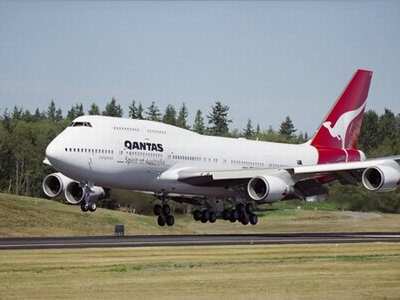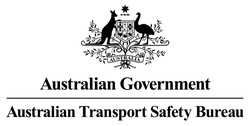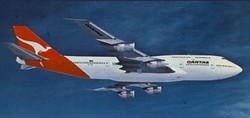CASA Orders Audit To Airline's Maintenance Procedures
It's official. Investigators with Australia's Civil Aviation
Safety Authority have ruled an exploding oxygen bottle was behind
an incident onboard a Boeing 747-400 flying for Qantas, in which a
two-meter-long hole was blown out the side of the plane's
fuselage.

As ANN reported, Flight 30 from Hong Kong to
Melbourne diverted to Manila July 25 after those onboard heard a
loud bang, and the plane's flight crew noticed the cabin was losing
pressure at FL290. The jetliner later made a safe landing, with no
reported injuries to those onboard.
As the flight's 346 passengers and 19 crewmembers exited the
plane, those on the ground discovered the 747's right leading edge
wing-to-body fairing was missing, and a five-foot hole was present
in the cargo area fuselage wall behind it. Luggage could be seen
jutting from the hole.
Within days, investigators said they suspected an oxygen bottle
was behind the explosion... noting one of the canisters stowed
onboard the airliner, and near the damaged area, was missing. Last
week, officials with CASA and the Australian Transport Safety
Bureau -- which oversaw the investigation -- issued their
preliminary report, stating an O2 bottle "sustained a failure,"
according to The Wall Street Journal.
The account of what came after that "failure" is interesting.
According to the ATSB report, the explosion propelled the bottle
into the floor of the passenger cabin, as the blast itself created
the hole in the fuselage. The bottle then impacted the top of the
cabin's ceiling, and fell back down... first through the hole in
the cabin floor, then the larger hole in the fuselage skin.
The rupture also damaged several cables, including the control
cables running from the co-pilot's yoke to the ailerons on the
jumbo jet's right wing. Control of the aircraft was not
compromised, however, due to duplicate controls on the pilot's side
of the plane that were not affected by the blast.
 The bottle that exploded was one of 13 carried onboard the 747,
used to stow oxygen for emergency use in the event of cabin
depressurization. A number of passengers said they were unable to
use their cabin oxygen masks while the plane made its emergency
descent.
The bottle that exploded was one of 13 carried onboard the 747,
used to stow oxygen for emergency use in the event of cabin
depressurization. A number of passengers said they were unable to
use their cabin oxygen masks while the plane made its emergency
descent.
One question remains for investigators, as they work to make
this "preliminary" report a definitive one: what caused the oxygen
bottle to fail?
For now, investigators aren't saying.... but the ATSB has issued
two related safety advisories, calling for operators to pay close
attention to the circumstances listed in the report, and to keep up
on mandatory O2 bottle inspections and repairs.
Qantas told the WSJ it welcomed the ATSB's report. "Our own
investigations agree with the ATSB's preliminary conclusions,"
Qantas CEO Geoff Dixon said, adding the airline has already
inspected the oxygen systems on its other 747-400s.
And more inspections are probably coming. On Monday, CASA
announced the results of a formal review of maintenance practices
at Qantas... noting a review conducted over the past month
"uncovered signs of emerging problems" in Qantas's maintenance
procedures, and that the authority will audit the carrier.
"The review found maintenance performance within Qantas is
showing some adverse trends and is now below the airline's own
benchmarks," continued Mick Quinn, CASA's deputy chief executive
officer of operations.
CASA added none of its findings were tied to the July 25 O2
bottle incident, and none of the problems led to an increase in the
number of safety-related incidents. Still, the findings are a
blemish against the airline's reputation as a safe carrier; Qantas
has never suffered a fatal accident since it switched to an all-jet
fleet in the 1960s.
 Dixon
took steps Monday to remind the flying public of that fact. "These
issues are not about safety or compliance and we are working to
bring our network performance back to the standards which have
earned us a reputation as one of the best and most reliable
airlines in the world," he said.
Dixon
took steps Monday to remind the flying public of that fact. "These
issues are not about safety or compliance and we are working to
bring our network performance back to the standards which have
earned us a reputation as one of the best and most reliable
airlines in the world," he said.
He conceded the airline's performance standards were
"significantly impacted" by a labor dispute between the carrier and
its 1,500 aircraft mechanics, which was settled last month.
The audit is expected to last three months, and will include
full onsite inspections of one plane type each from Qantas' fleet
of Boeing 737, 747 and 767s. Inspectors will also thoroughly review
the maintenance documentation for each checked aircraft.
CASA said the audit will show "whether the existing lines of
authority and control over maintenance within the airline are
delivering the best possible outcomes."
 Airborne 04.16.24: RV Update, Affordable Flying Expo, Diamond Lil
Airborne 04.16.24: RV Update, Affordable Flying Expo, Diamond Lil ANN's Daily Aero-Term (04.20.24): Light Gun
ANN's Daily Aero-Term (04.20.24): Light Gun Aero-News: Quote of the Day (04.20.24)
Aero-News: Quote of the Day (04.20.24) Aero-News: Quote of the Day (04.21.24)
Aero-News: Quote of the Day (04.21.24) ANN's Daily Aero-Term (04.21.24): Aircraft Conflict
ANN's Daily Aero-Term (04.21.24): Aircraft Conflict





